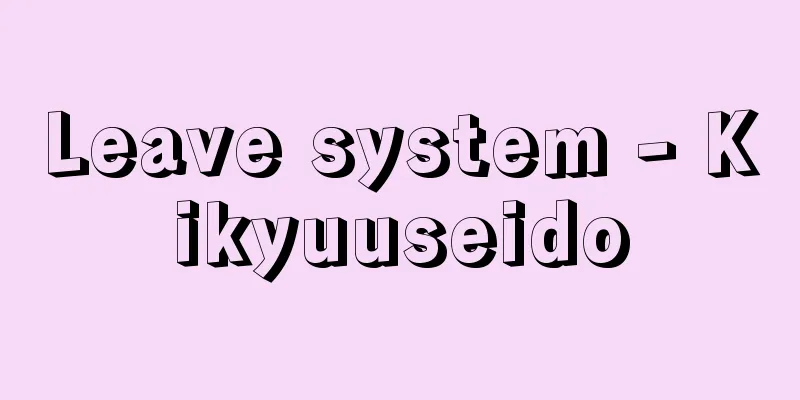Kiraigo - Kiraigo

|
A folk art form. Bon Kyogen is handed down in Kosaiji Temple (Musho, Yokoshibahikari Town, Sanbu County) in Chiba Prefecture. It is a masked play performed by parishioners on the 16th of August during the Bon Buddhist memorial service. It is also called Onimai. A protruding stage is set up in front of the main hall, and a high tower is built as a stage set, creating a mountain of death with ladders. The Kyogen is divided into seven sections, including a section depicting a sinner being tortured by demons in hell (the great opening, the Sai no Kawara, the Kamairi, and the Mountain of Death), and a story section that dramatizes the origins of Kosaiji Temple (the Priest's Journey, the Visit to the Grave, and the Priest's Tale). In the Daijo, King Enma, Kushojin, the Onibaba, the Black Oni, and the Red Oni appear and blame the dead who have been punished for their sins. In Sai-no-Kawara, a demon appears where children are piling up pebbles. Jizo appears and saves the children. In Kamairi, a criminal is forced into a cauldron and made to suffer. In Shide-no-Yama, a criminal who is blamed by demons and onibaba and chased up a mountain is saved by Jizo. The part with the good luck story is no longer performed. Similar demon dances were also performed at Jofuku-ji Temple (Katori City) and Gosetsu-ji Temple (Narita City) in the former Katori County. [Nobuo Watanabe] [Reference] |This is a Bon Kyogen performance handed down at Kosaiji Temple. It is also called Oni-mai. The performers, stage equipment, costumes, and everything else are all prepared by parishioners and local residents, and it takes place every year on August 16th. The photo shows the "big introduction" of the four-part tale of hell, in which a red demon scolds the dead who have been punished for their crimes. Nationally designated Important Intangible Folk Cultural Property Yokoshibahikari Town, Sanbu District, Chiba Prefecture © Chiba Prefecture Tourism and Products Association Demons coming Source: Shogakukan Encyclopedia Nipponica About Encyclopedia Nipponica Information | Legend |
|
民俗芸能。千葉県の広済寺(山武(さんぶ)郡横芝光(よこしばひかり)町虫生(むしょう))に伝わる盆狂言。8月16日、盆の法事のおりに檀家(だんか)の人々が演じる仮面劇。鬼舞(おにまい)ともいう。本堂の前に張り出し舞台を設け、舞台装置として高い櫓(やぐら)を組み、梯子(はしご)を架けた死出(しで)の山をつくる。狂言は7段に分かれ、罪人が地獄で鬼に責められるさまを仕組んだ部分(大序・賽(さい)の河原・釜入・死出の山)と、広済寺の縁起を脚色した物語の部分(和尚道行(おしょうみちゆき)・墓参・和尚物語)からなる。大序は、閻魔大王(えんまだいおう)、倶生神(くしょうじん)、鬼婆、黒鬼、赤鬼が出て、罪の裁きを受けた亡者を責める。賽の河原は、子供たちが小石を積んでいるところに鬼が出る。そこへ地蔵が現れ、子供を救う。釜入は、罪人が釜に入れられて苦しめられる。死出の山は、鬼・鬼婆に責められ山の上に追われた罪人の亡者が地蔵に救われる、という筋である。縁起物語の部分は現在は行われない。同様の鬼舞は、旧香取(かとり)郡の浄福寺(香取市)や同郡の迎接(ごうせつ)寺(成田市)にもあった。 [渡辺伸夫] [参照項目] |広済寺に伝わる盆狂言。鬼舞ともいう。演者をはじめ、舞台装置、衣装などすべてが檀家や地元住民の手により、毎年8月16日に行われる。写真は4段からなる地獄譚の「大序」で、赤鬼が罪の裁きを受けた亡者を責める場面。国指定重要無形民俗文化財 千葉県山武郡横芝光町©公益社団法人千葉県観光物産協会"> 鬼来迎 出典 小学館 日本大百科全書(ニッポニカ)日本大百科全書(ニッポニカ)について 情報 | 凡例 |
<<: Kilauea [mountain] - Kilauea
Recommend
Hercules beetle - Hercules beetle
This beetle belongs to the family Scarabaeidae in ...
Rice gruel - Shitogi
〘Noun〙 Rice cakes offered to the gods. Steamed glu...
cerium
Ce. Atomic number 58. Electron configuration [Xe]...
Tasmanian devil
It is an animal of the Marsupial order of Mammali...
Sakarya River (English spelling)
This river originates in the mid-west of the Anato...
Okina Inari - Okina Inari
... There are three types of popular deities that...
Horse mountain
...Population: 7,260 (1995). Located on the easte...
Ebroin
…Pippin the Middle Ages (von Herstal) was mayor o...
Tang Dynasty (Korean) Chest of Dynasties
…The word '櫃' comes from the Chinese word...
Guano era
...Because phosphoric acid is poorly soluble, it ...
Diesel car
Also called diesel railcars. A diesel railcar is a...
Benishijimi (English name: small copper)
A butterfly belonging to the order Lepidoptera, f...
Thin-headed Caddisfly - Thin-headed Caddisfly
...The representative species known from Japan ar...
Side volcano - Sokkazan
Also called a parasitic volcano. A small volcano f...
Proxemics
A field of cultural anthropology that studies the ...









